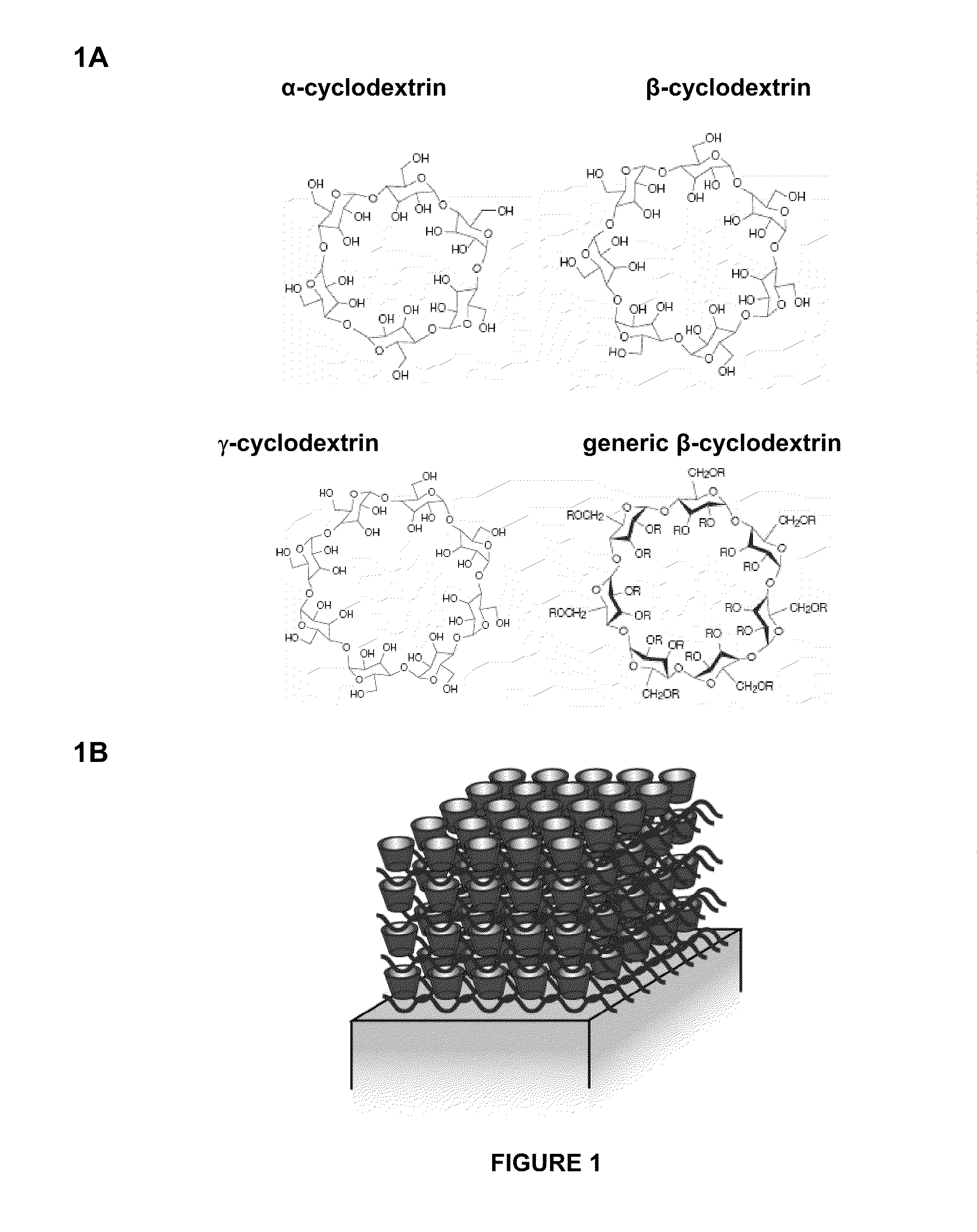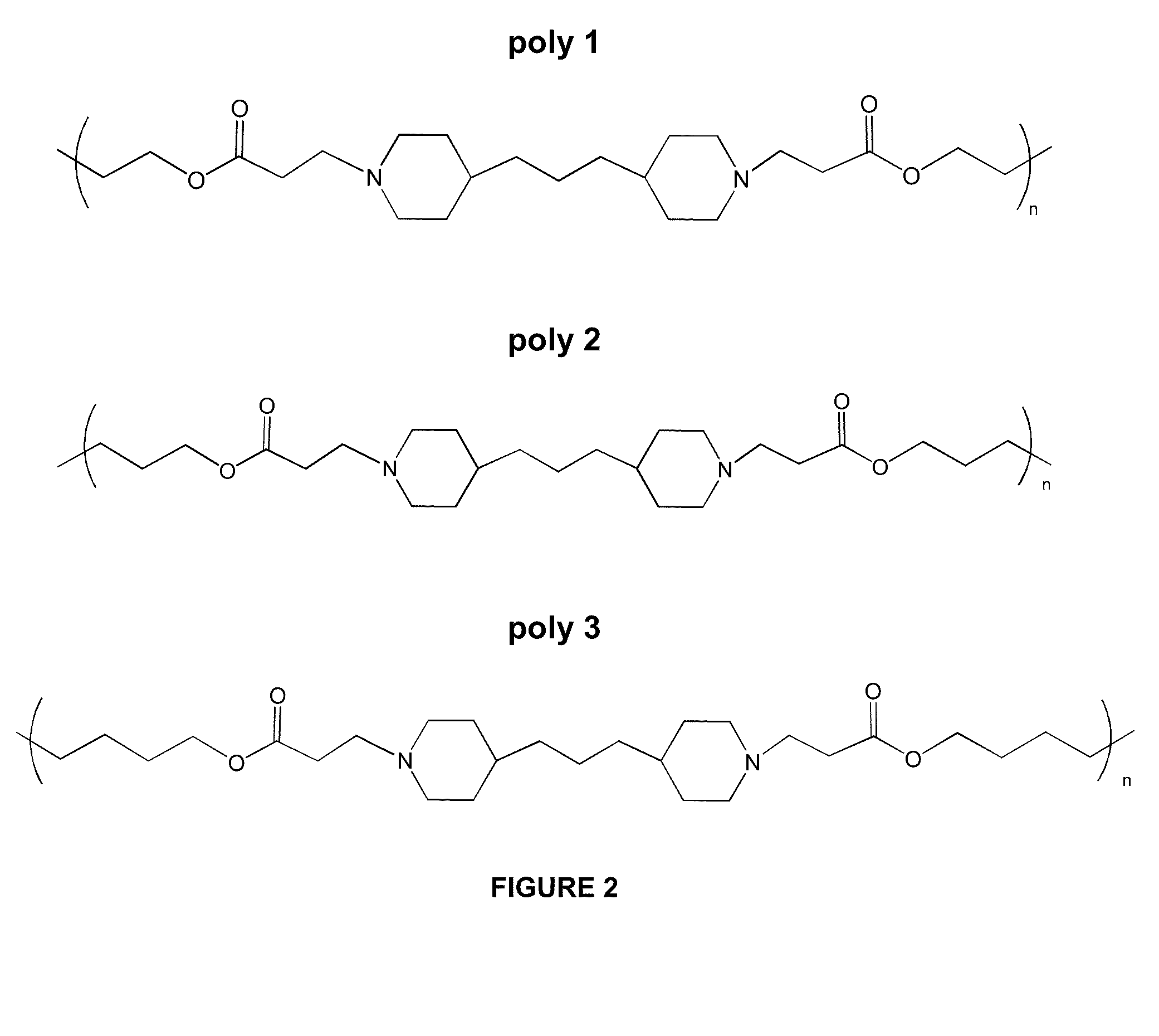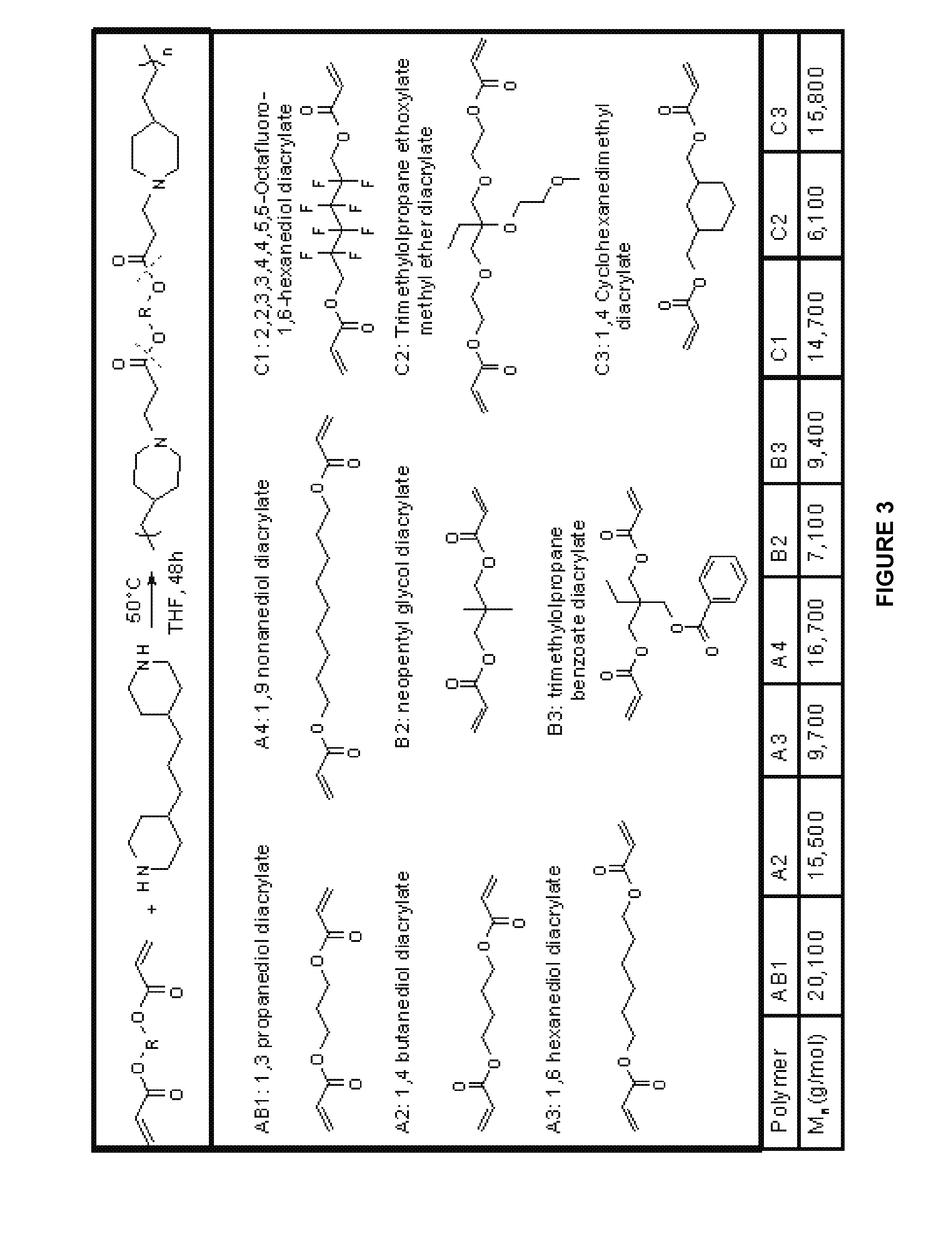Controlled delivery of bioactive agents from decomposable films
- Summary
- Abstract
- Description
- Claims
- Application Information
AI Technical Summary
Benefits of technology
Problems solved by technology
Method used
Image
Examples
example 1
Construction of Layer-by-Layer Films with Using a Variety of Poly(β-Amino Ester)s
[0111]Characteristics of layer-by-layer (LbL) films (such as release kinetics of bioactive agents) vary depending on the type of material used to construct the films. In this Example, a variety poly (β-amino ester)s were synthesized using different monomers. Such poly (β-amino ester)s were then used to construct films by LbL deposition onto glass substrates with alternating layers of polyanions and polycations.
Materials and Methods
[0112]Reagents
[0113]All monomers were purchased from Dajac Laboratories, Inc. (Feasterville, Pa.), except 1,4 butanediol diacrylate, 1,6 hexanediol diacrylate, and 4,4-trimethylenedipiperidine, which were obtained from Alfa Aesar (Ward Hill, Mass.). Poly (sodium 4-styrene sulfonate) (SPS, Mn=70,000) and dextran sulfate (Mn=8,000) were purchased from Sigma Aldrich (St. Louis, Mo.). Dulbecco's PBS buffer and glass substrates were obtained from VWR Scientific (Edison N.J.). Linea...
example 2
Construction and Characterization of Layer-by-Layer Films with Cyclodextrin Inclusion Complexes
[0128]In this Example, a cyclodextrin was used as carrier to incorporate drug into LbL films. Sulfobutylether β-cyclodextrin (SBE7CD) is also known as Captisol and contains 7 SO3− groups per cyclodextrin molecule. Captisol was used as a carrier for dexamethasone, a corticosteroid that is used as an anti-inflammatory agent and immunosuppressant. LbL films were constructed with bilayers comprised of alternating layers of Poly 1 (see structure in FIG. 2) and Captisol-dexamethasone complexes, and release kinetics and stability of poly 1 / Captisol-dexamethasone films were studied.
Materials and Methods
[0129]Reagents and solutions were obtained and prepared as described in Example 1. Captisol-dexamethasone inclusion complexes were prepared by dissolving dexamethasone in a solution of Captisol. Films comprising bilayers of poly 1 / Captisol-dexamethasone were constructed by methods described in Examp...
example 3
Construction and Characterization of Layer-by-Layer Films Comprising Polymeric Cyclodextrin
[0138]Because LbL films built with Captisol were unstable and did not exhibit controlled release of drug, the inventors experimented with using another form of cyclodextrin. In the present Example, LbL films were built with polymeric cyclodextrin and characterized. Carboxymethyl-β-cyclodextrin (BCD) is a cyclodextrin that substituted with two COO− groups per cyclodextrin molecule. BCD can be polymerized to form a polymer having a cyclodextrin backbone. Layers of polymeric BCD were deposited alternately with layers of poly 1 to form poly 1 / poly(BCD) films having 20 bilayer units ((poly 1 / poly(BCD))20).
[0139]Film construction, release studies, and degradation studies were performed by methods described in Example 1, except that film construction was performed in a pH 6 environment. Films were kept in PBS pH 7.4 at 25° C. for degradation studies. As shown in FIG. 11A, thickness of poly 1 / BCD film...
PUM
| Property | Measurement | Unit |
|---|---|---|
| Time | aaaaa | aaaaa |
| Nanoscale particle size | aaaaa | aaaaa |
| Nanoscale particle size | aaaaa | aaaaa |
Abstract
Description
Claims
Application Information
 Login to View More
Login to View More - R&D
- Intellectual Property
- Life Sciences
- Materials
- Tech Scout
- Unparalleled Data Quality
- Higher Quality Content
- 60% Fewer Hallucinations
Browse by: Latest US Patents, China's latest patents, Technical Efficacy Thesaurus, Application Domain, Technology Topic, Popular Technical Reports.
© 2025 PatSnap. All rights reserved.Legal|Privacy policy|Modern Slavery Act Transparency Statement|Sitemap|About US| Contact US: help@patsnap.com



